Do you have a question about the Fujitsu Slim Duct Type and is the answer not in the manual?
Crucial information and warnings that must be read before starting installation.
Specific safety measures and advice for installation procedures.
Safety guidelines for transporting, installing, connecting, and servicing the unit.
Key safety and procedural precautions when working with R410A refrigerant.
Essential tools required for installing and servicing units using R410A refrigerant.
Specifies that installation and service must be performed by qualified personnel.
Requirements and specifications for copper pipes suitable for R410A refrigerant.
List of parts furnished with the unit for installation.
List of optional parts available for the unit.
Detailed descriptions of various optional parts.
Details on copper pipe types and required heat insulation materials.
List of supplementary materials needed for installation.
Specified operating temperature and humidity ranges for cooling/heating.
Requirements for the connection cable, including gauge and voltage.
Advice on selecting a suitable and secure location for unit installation.
Areas where the unit should not be installed due to potential damage or hazards.
Factors to consider and discuss with the customer for optimal positioning.
Dimensional requirements for the ceiling concealed type unit installation.
Dimensional requirements for wall mounted and floor standing types.
Step-by-step guide for installing the ceiling concealed indoor unit.
Instructions for connecting ducts to the inlet and outlet of the ceiling concealed unit.
Maximum allowable external static pressure for different unit models.
Steps for removing and reinstalling the unit cover.
Procedure for installing air filters into the unit.
Steps for drilling holes and installing mounting bolts using a template.
Method for hanging the indoor unit using provided hardware.
Ensuring the unit is installed level for proper operation.
Example installation, duct connection, and static pressure limits for specific units.
Steps for removing and reinstalling the unit cover.
Procedure for installing air filters into the unit.
Instructions for securing the unit and ensuring it is properly aligned.
Guidance on selecting and specifying copper pipes and necessary insulation.
Detailed steps for performing flare connections and the flaring operation.
Precautions and techniques for bending refrigerant pipes without damage.
Torque values for tightening flare nuts during pipe connection.
How to install coupler heat insulation on refrigerant pipe joints.
Procedure for installing drain pipes for ceiling concealed units.
Procedure for installing drain pipes for wall mounted/floor standing units.
General guidelines for drain pipe installation including gradient and supports.
Instructions for attaching the supplied drain hose and hose band.
Verifying proper drainage and insulating the drain hose.
Procedure to confirm that the unit's drainage system is functioning correctly.
Critical safety precautions and general rules for electrical wiring.
Proper method for connecting wires using ring terminals.
Steps to remove the control box cover for access.
Connecting power and remote controller cables to the terminal board.
Schematic illustrating the wiring connections for the indoor unit.
Physical installation steps for mounting the remote controller.
Techniques for concealing and securing the remote controller cable.
Instructions for configuring the unit using DIP switches on the remote controller.
Configuration options for filter signs, static pressure, and cooling temperature correction.
Adjusting heating temperatures, sensor selection, auto restart, and external controls.
Setting drainage function and fan delay using jumper wires.
Important notes regarding jumper wire settings and forbidden configurations.
Pre-test checks, operation steps, and wireless remote test run.
Methods for setting up and operating the unit with two remote controllers.
Wiring and DIP switch settings for dual remote controller installations.
Details on connecting external input and output devices to the unit.
Steps for installing the optional remote temperature sensor.
Steps for installing the optional IR receiver unit.
A comprehensive list of error codes, their descriptions, and remarks.
Key points to explain to the customer regarding unit operation and maintenance.
Crucial information and warnings that must be read before starting installation.
Specific safety measures and advice for installation procedures.
Safety guidelines for transporting, installing, connecting, and servicing the unit.
Key safety and procedural precautions when working with R410A refrigerant.
Essential tools required for installing and servicing units using R410A refrigerant.
Specifies that installation and service must be performed by qualified personnel.
Requirements and specifications for copper pipes suitable for R410A refrigerant.
List of parts furnished with the unit for installation.
List of optional parts available for the unit.
Detailed descriptions of various optional parts.
Details on copper pipe types and required heat insulation materials.
List of supplementary materials needed for installation.
Specified operating temperature and humidity ranges for cooling/heating.
Requirements for the connection cable, including gauge and voltage.
Advice on selecting a suitable and secure location for unit installation.
Areas where the unit should not be installed due to potential damage or hazards.
Factors to consider and discuss with the customer for optimal positioning.
Dimensional requirements for the ceiling concealed type unit installation.
Dimensional requirements for wall mounted and floor standing types.
Step-by-step guide for installing the ceiling concealed indoor unit.
Instructions for connecting ducts to the inlet and outlet of the ceiling concealed unit.
Maximum allowable external static pressure for different unit models.
Steps for removing and reinstalling the unit cover.
Procedure for installing air filters into the unit.
Steps for drilling holes and installing mounting bolts using a template.
Method for hanging the indoor unit using provided hardware.
Ensuring the unit is installed level for proper operation.
Example installation, duct connection, and static pressure limits for specific units.
Steps for removing and reinstalling the unit cover.
Procedure for installing air filters into the unit.
Instructions for securing the unit and ensuring it is properly aligned.
Guidance on selecting and specifying copper pipes and necessary insulation.
Detailed steps for performing flare connections and the flaring operation.
Precautions and techniques for bending refrigerant pipes without damage.
Torque values for tightening flare nuts during pipe connection.
How to install coupler heat insulation on refrigerant pipe joints.
Procedure for installing drain pipes for ceiling concealed units.
Procedure for installing drain pipes for wall mounted/floor standing units.
General guidelines for drain pipe installation including gradient and supports.
Instructions for attaching the supplied drain hose and hose band.
Verifying proper drainage and insulating the drain hose.
Procedure to confirm that the unit's drainage system is functioning correctly.
Critical safety precautions and general rules for electrical wiring.
Proper method for connecting wires using ring terminals.
Steps to remove the control box cover for access.
Connecting power and remote controller cables to the terminal board.
Schematic illustrating the wiring connections for the indoor unit.
Physical installation steps for mounting the remote controller.
Techniques for concealing and securing the remote controller cable.
Instructions for configuring the unit using DIP switches on the remote controller.
Configuration options for filter signs, static pressure, and cooling temperature correction.
Adjusting heating temperatures, sensor selection, auto restart, and external controls.
Setting drainage function and fan delay using jumper wires.
Important notes regarding jumper wire settings and forbidden configurations.
Pre-test checks, operation steps, and wireless remote test run.
Methods for setting up and operating the unit with two remote controllers.
Wiring and DIP switch settings for dual remote controller installations.
Details on connecting external input and output devices to the unit.
Steps for installing the optional remote temperature sensor.
Steps for installing the optional IR receiver unit.
A comprehensive list of error codes, their descriptions, and remarks.
Key points to explain to the customer regarding unit operation and maintenance.
| Brand | Fujitsu |
|---|---|
| Model | Slim Duct Type |
| Category | Air Conditioner |
| Language | English |
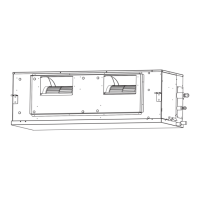
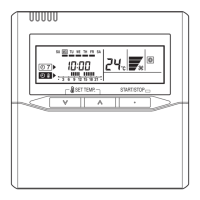
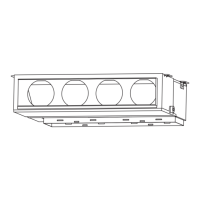
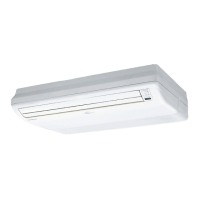
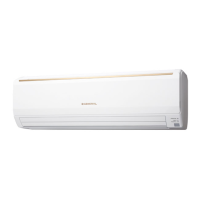
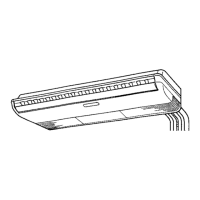
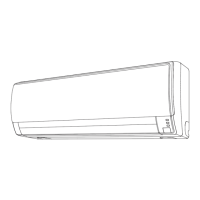
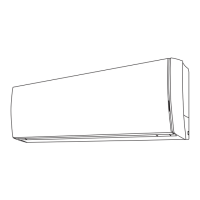
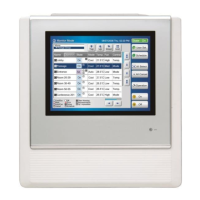
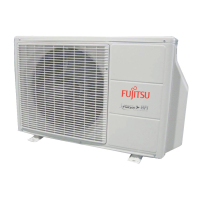
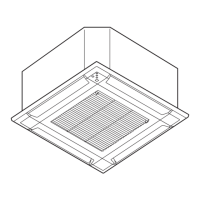

